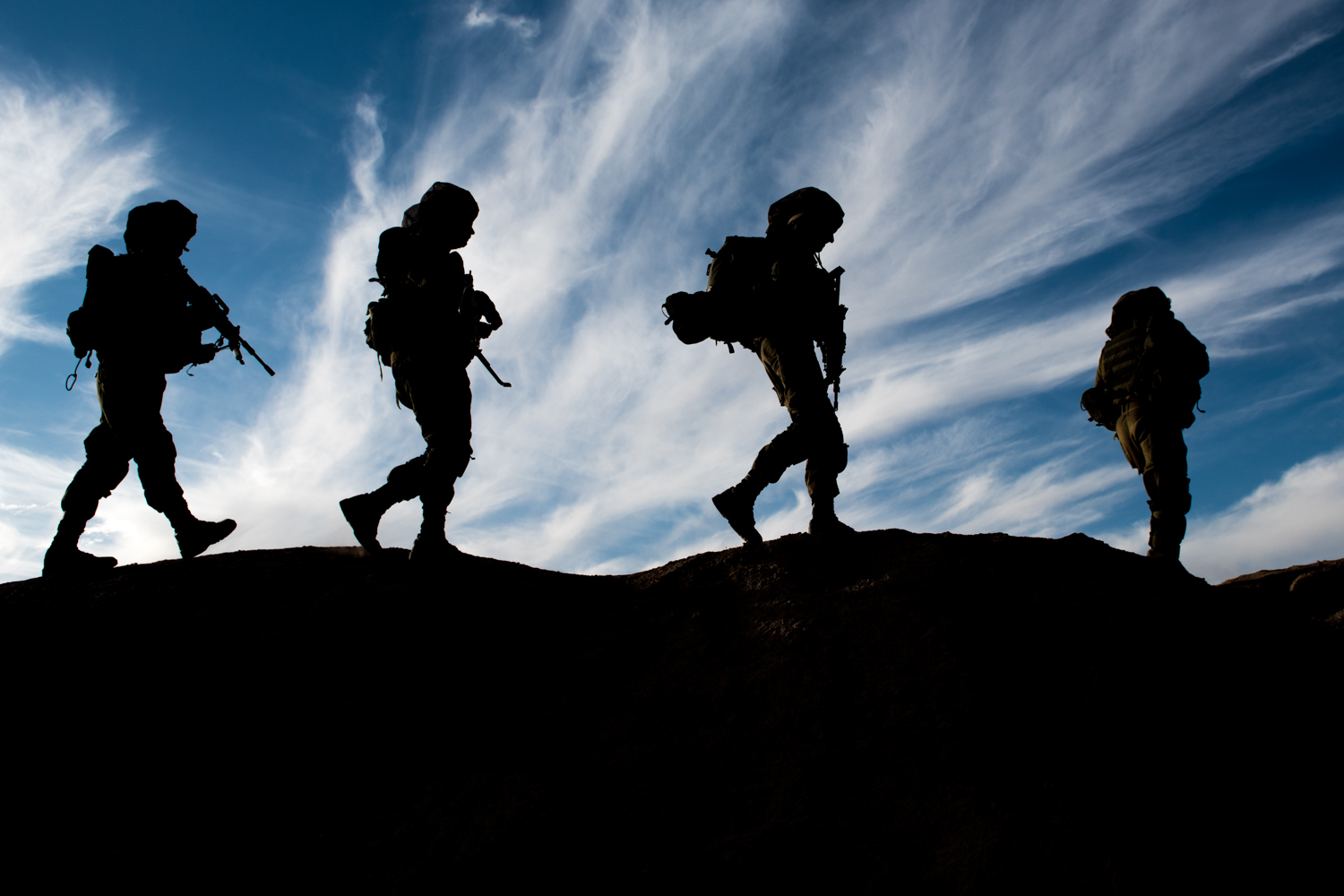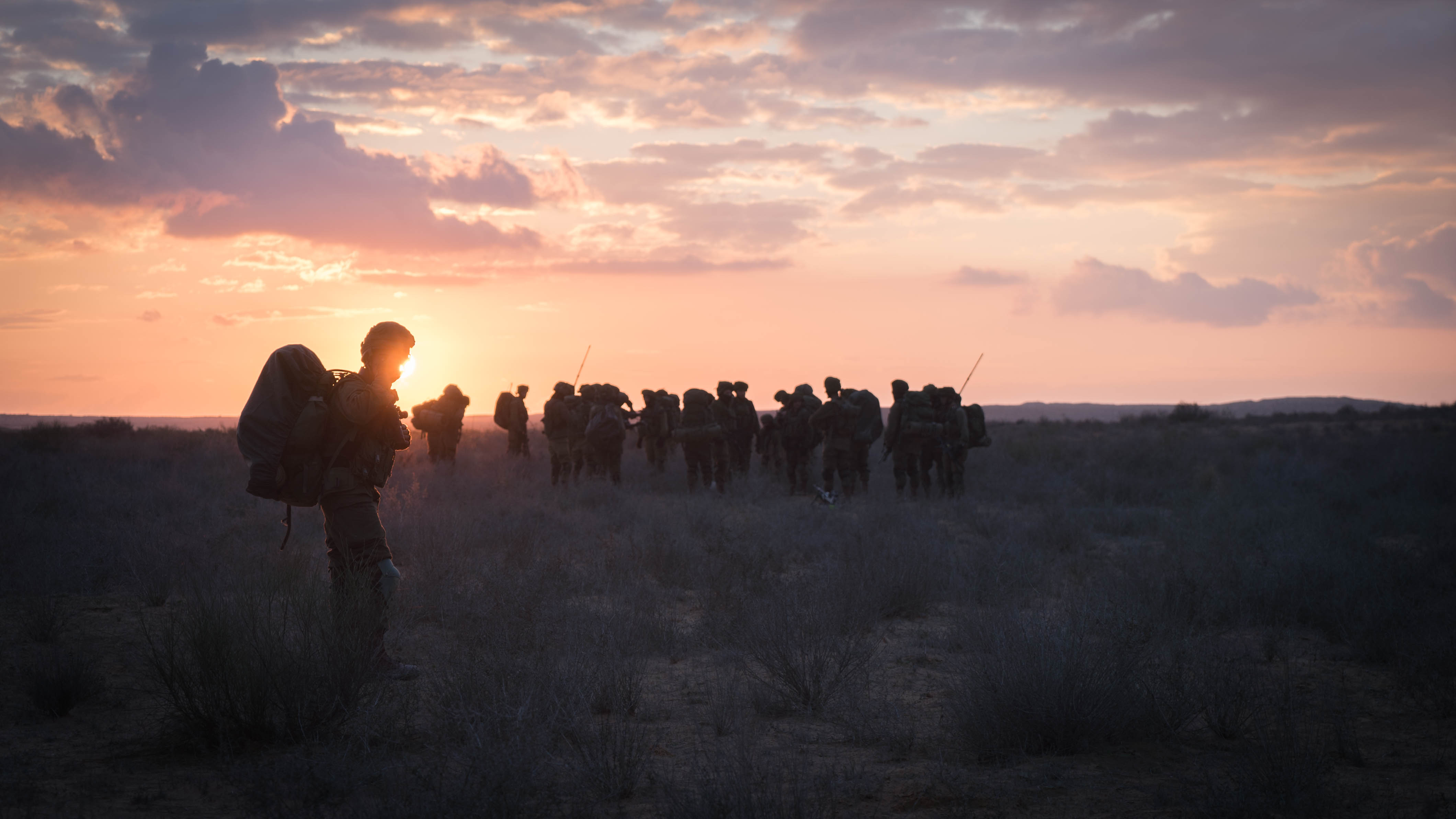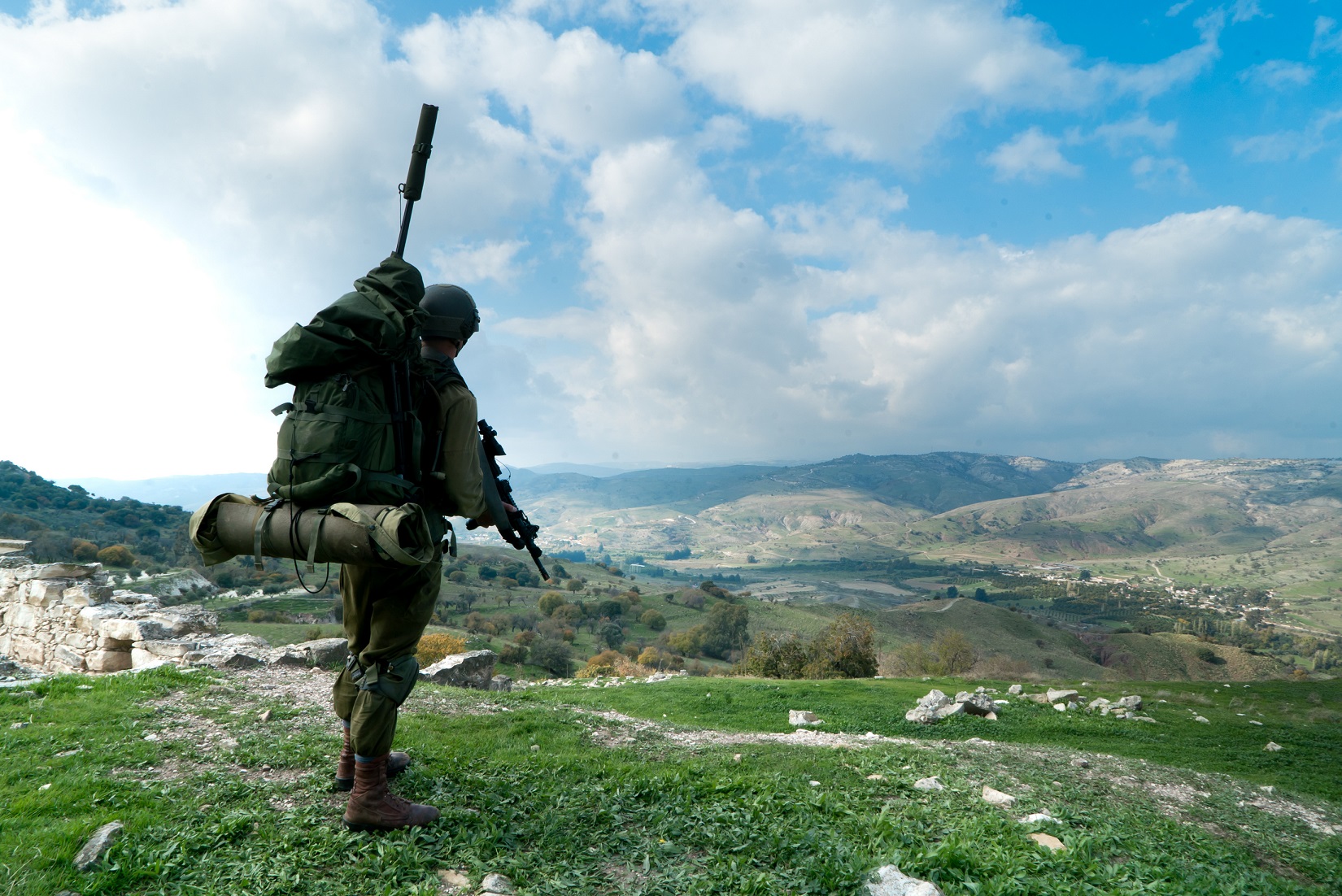Publications
INSS Insight No. 1344, July 12, 2020
In a recent speech, IDF Chief of Staff Aviv Kochavi said that even during the coronavirus crisis, “the IDF continued to prevent and uproot threats,” and to provide Israel with security and stability. This activity, he stated, is likely to be taken for granted, because of the “defense paradox: when there is security tranquility and stability, people are inclined to forget how difficult it is to achieve them,” and they make the mistake of thinking that spending on defense needs can be reduced. The Chief of Staff warned that many countries, including Israel, have committed this error and subsequently paid a heavy price. His remarks were apparently in response to the economic recession in light of the coronavirus crisis. In view of the economic and budgetary distress, it is likely that all government ministries, including the Ministry of Defense, will be asked to accept smaller budgets. However, a smaller defense budget is liable to impact negatively on the army’s capability, and particularly the ability of the ground forces, to provide effective security in peacetime and in an emergency, especially in war.
What sort of campaign is the most important? Is it the ongoing campaign between wars, which in part is designed to prevent war, or is war itself the principal campaign? Is the IDF's primary task to continue its force buildup and improve readiness in preparation for full-scale war? In today’s region, the opposing sides will usually prefer to stay below the threshold of full-scale war. On the other hand, there are situations that feature a chain of successive responses by the two sides with unforeseen consequences that are likely to culminate in escalation or even war. The IDF must therefore maintain its readiness for both the campaign between wars and for all-out war.
Before the Second Lebanon War, for example, the ground forces’ fitness was severely affected by the 2003 budget cut. However, the theory was that the ongoing intensive operations against Palestinian terrorism would preserve the army's operational readiness. This misconception ignored the fact that fighting terrorism is different from what is likely to occur in a campaign like the one in Lebanon. Indeed, the "less than satisfactory" way, as a senior IDF officer put it, that that ground forces operated in the Second Lebanon War demonstrated that neglecting their fitness was a costly decision. The conclusion is that training the ground army for the purpose of maintaining battle fitness for an emergency requires the continuous investment of resources. This conclusion is also supported by the lessons of Operation Protective Edge in the Gaza Strip in 2014, which highlighted the same dilemma, although in a less severe way. The fact that almost the entire regular army taking part in maneuvers fought in this operation was also due to the unfitness of the reserve forces, which did not undergo the necessary training and required a long time to make them combat ready.

There were good explanations for the cuts in both of these cases. The second intifada and the economic crisis on the one hand, and the 2011 social protests on the other, resulted in a decision to cut the defense budget. The IDF, most of whose budget is inflexible and tied to payment of salaries and pensions, regular maintenance, procurement, and force buildup projects, makes cuts where it can, usually in training, based on how it assesses the risk of war.
While the value ascribed to the ground maneuver, which requires a major logistics endeavor and almost always includes casualties, faded, the importance of firepower (mostly precision, but not exclusively) rose. The reasons are obvious: airpower, for example, is available for immediate and defined action on the other side of the border, and its use falls below the war threshold. Airpower makes full use of Israel's technological and military supremacy, and utilizes precision-guided weaponry, which reduces the risk to IDF forces and uninvolved civilians.
The IDF currently possesses very effective firepower and intelligence capabilities for combined operations, and the air force is capable of attacking thousands of targets a day. These capabilities were highly impressive against the threat posed by Hezbollah in 2006 and Hamas in 2014. Then too, however, precision firepower, boosted by timely and accurate intelligence, was not enough. The enemy became accustomed to it and learned to evade it, while continuing to launch missiles and rockets at the Israeli home front. The ground maneuver and firepower did not stop the barrages against the Israeli home front, but they did disrupt and lessen them. The combination of the two is capable of bringing the campaign to a close and leading to a situation in which Israel will be able to force its terms on its enemies – a state of affairs that Israel will seek to maintain for as long as possible.

The use of firepower is essential. It injures and disrupts the enemy's operational capabilities, deprives it of strategic assets, inflicts severe and destructive damage, deters it from another campaign for years, and forces it to invest its resources in repairing the damage. On the other hand, Israel cannot afford the luxury of prolonged campaigns because of the threat to its home front posed by the enemy. Although the fighting should not be halted before Israel's firepower is used in the attacks, Israel should aim at shortening the campaign's duration as much as possible. One of the tools available to the IDF to shorten the campaign is the ground maneuver, because it poses a concrete threat to the enemy's survival and ability to function, and is likely to cause it to terminate the campaign.
What this means is that the army needs supplementary land capability, including regular and reserve forces that can be called up and used as a spearhead in a lightning land campaign that will disable and damage the military power of Hezbollah and Hamas. A ground force composed of combined combat teams smaller in size than those of the IDF's past traditional and awkward structure is needed. The old structure relied mainly on divisions as combat teams. What is needed are brigade-size forces able to move rapidly from theater to theater and conduct raids with speed, flexibility, and tight inter-branch coordination, integrating elements of firepower and intelligence, while initiating direct contact with enemy operatives and conducting effective attacks against them. These forces, which will be based on the ability to process intelligence rapidly, will be able to track down an elusive enemy that makes every effort to avoid direct contact with the army by staying protected in tunnels and bunkers.
The IDF’s most recent successful land campaigns were in Operation Defensive Shield, when Chief of Staff Aviv Kochavi commanded the Paratroopers Brigade, and Operation Cast Lead, when he was head of the Operations Division of the Operations Directorate. It appears that this experience taught him that a land campaign should aim to destroy the enemy's assets and military power. In his view, "If all you did was reach a certain line without destroying the rockets, anti-tank missiles, and headquarters on the way, the enemy entrenched in the urban area will continue operating as if the land operation or counterattack had no effect on it."
Even in a campaign initiated by the IDF with powerful and impressive firepower, targets lower their signature within a short time, and the enemy vanishes from the battlefield. In order to track down the enemy, attack it, and bring it to the surface, so that it can be hit with a barrage of firepower, ground maneuver and direct contact with the enemy's strongholds and hiding places are necessary.

The IDF must now undergo force buildup processes that address a range of scenarios – some of which are already evident – including annexation in the West Bank, a second wave of the coronavirus, an economic recession accompanied by a deep cut in the defense budget, and, as always, the possibility of an outbreak of unrest in the West Bank or a conflict in the Gaza Strip and the northern theater (and possibly both). The multi-year plan will have to create optimal readiness in the army for the various scenarios, while setting in motion force buildup processes for the future and cutting some portions of the budget. Therefore, it would be a mistake to devote most of the investment to intelligence and firepower capabilities, at the cost of preparedness and buildup of ground forces.
The previous multi-year plan, “Gideon,” which was carried out during the term of former Chief of Staff Gadi Eisenkot, emphasized preparedness of the ground forces, "our Achilles’ heel," as described by Major General Aharon Haliva. During Eisenkot's term, training of ground forces increased; substantive reform was conducted in the ground forces arm, in which tens of thousands of unneeded soldiers were discharged from reserve duty; and a distinction was made in the fitness of units, with priority being given to the combat brigades, even at the expense of force buildup and procurement. In addition, the IDF's ability to operate deep in enemy territory was upgraded through the establishment of a commando brigade. The political deadlock of the past year, however, which prevented the creation of a regular budget framework and caused a cut in training (exacerbated by the coronavirus crisis), means that the Achilles’ heel is still a weak point.
By nature, armies are conservative organizations. The fear that the army will have to engage in combat before the change is complete means that the processes of change will be relatively slow, but these must be persistent. Another variable is the inherent tension in force buildup processes between the desire to improve weak points and the desire to strengthen the IDF's relative advantage. The difficulty in strengthening the ground forces stems from the size of this arm in manpower, combat platforms, and equipment. The cost of consolidating a quality effect is larger and more substantial that that required for procuring precision weapons. The result is that the army will usually choose to strengthen its qualitative advantage. On the other hand, the fact that the regular and reserve land army is shrinking as time goes by makes it possible to strengthen its strike forces, as was done under the Gideon plan.
Because of the expected defense budget cut, the next multi-year plan, “Tnufa” (“Momentum”), should build the most suitable plan for Israel and the challenges before it, and should in effect continue the previous multi-year plan. The threat from both the Gaza Strip and the northern front, which includes a grave threat to the home front from batteries of rockets and missiles and raiding forces designed to penetrate and operate in Israeli territory, requires making the ground forces much quicker, more flexible, and capable of operating on both defense and offense. This joins the necessary enhancement of firepower capabilities and their lethalness.
Some of the measures were indeed taken over the past year. In the IDF Southern Command and Northern Command, Major Generals Herzi Halevi and Amir Baram, both originally from the Paratroopers, initiated a series of training maneuvers and threshold tests, so that all the regular and reserve IDF battalions undergo training simulating a campaign in the south and the north. These training maneuvers are important, because, as the Chief of Staff said, "If there is something significant to combat soldiers crossing the border, it is a sense of capability and confidence." Although the test of fitness is a step in the right direction, a major investment must still be made in the ground forces, because the combination of firepower and an effective and energetic land campaign can shorten the duration of the next conflict, and also achieve a decisive outcome.



